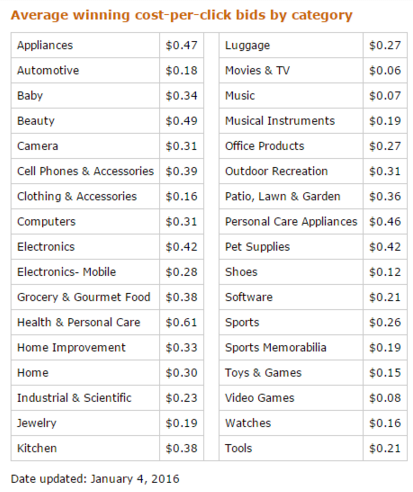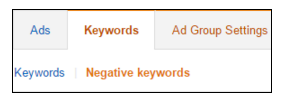How Amazon Sponsored Products Can Drive Sales Growth

Last week, ecommerce experts at CPC Strategy fielded Amazon-related questions for our webinar summit on how to increase product discoverability on the Amazon SERP, scaling Sponsored Products campaigns, and pricing strategies for private label brands.
The 4-day 2016 Amazon Virtual Summit was designed to arm high-volume, professional Amazon sellers with proven strategies and tactics to effectively grow a profitable brand on the Marketplace.
 There were a lot of questions we didn’t get a chance to answer – so here they are now with answers from Pat Petriello, Senior Marketplace Strategist at CPC Strategy.
There were a lot of questions we didn’t get a chance to answer – so here they are now with answers from Pat Petriello, Senior Marketplace Strategist at CPC Strategy.
A. I’d take Amazon’s page one suggested bid with a grain a salt and use actual click and conversion data to make bid modification decisions.
We often find that to get on page one of the SERP is a much higher bid than what Amazon is suggesting, and as long as you’re getting an acceptable ACoS, you can keep pushing up the bid to get more volume while remaining profitable.
A. See here and the chart below:

A. Since organic ranking on Amazon is comprised of a product’s relevance to the customer’s search and that product’s sales history, Sponsored Products can have an impact on organic ranking.
A. Sponsored Products are also available to Vendors through their AMS (Amazon Marketing Services) login.
A. Amazon algorithmically uses a combination of product relevance based on content and the conversion history of the products within the ad group to choose the best ASIN to serve.
What this means is that not all ads in an ad group will receive the same level of visibility, so you’ll have to monitor conversion rate on each ad to determine which is the most likely to result in a conversion.
A. Negative keywords exist within Sponsored Products at the ad group level.

A. The “punishment” will come in the form of low volume for your ads. The key to success in hyper competitive verticals is to find the specific market niche where your products provide the best value.
For example, instead of competing for the general search term “iphone case”, target a submarket such as “iphone case for girls” or “glitter iphone case” where you have a greater chance of getting traction.
A. Sponsored Products only run when your offer is in the buy box for the account that you are advertising out of. As such, if you have a 3P (Seller Central) offer against an ASIN which you are also a Vendor of, your 3P Sponsored Products ad will rarely run because it won’t be in the buy box.
A. It’s important to maximize the amount of real estate your product takes up on page 1 of the Amazon SERP. Even if your product is already ranking #1 for a given search term, it’s useful to reinforce that by also taking up real estate in the Sponsored Products placements.
Also, with Sponsored Products placements increasingly showing up above the organic results in the SERP, the importance of winning the Sponsored Products top placement becomes even more important.
A. No, both Amazon fulfilled and merchant fulfilled products are eligible for Sponsored Products.
A. It is okay to have multiple ASINs target the same keywords in manual campaigns. Amazon will algorithmically determine which ASIN to surface based off of the sales history and bid level of the ASINs competing for that keyword.
What’s most important to you is that your product surfaces over that of your competitors and having multiple products involved in the auction for a keyword increases the likelihood of that occurring. You will not be bidding against yourself as long as the ads are coming from the same account.
Over time you’ll see which product generates the best conversion rate for that keyword.
Once you identify that product, you’ll want to make sure you’re only bidding on the keyword for that product so that your top converting product is always surfacing for that keyword.
A. Optimal keyword selection often includes both single search term keywords and multiple term phrases. Using both together increases the volume of shoppers you can get your product in front of.
A. The content and the offer on your detail page will significantly impact conversion. Consider your price, fulfillment method (FBA), product title, images, bullet points, description, and product reviews as factors that impact the conversion rate of your detail page.
A. Sponsored Products visibility is determined by relevancy, bid level, and sales history.
As product reviews impact the conversion rate of the product, better reviewed products will sell better and thus will be more likely to surface in Sponsored Products placements.
A. Yes, it’s best practice to use the search term data you get back from your automatic campaigns to inform the selection of back end search terms and product content.
A. The more granular you can get with ad group differentiation, the more closely you can align relevant keywords to your products.
For example, if you have purses of 5 different colors within a single ad group, you’ll be best served by using keywords that are relevant to all of them, such as “leather purse,” “small women’s purse,” or “casual style purse.”
If you have color specific keywords for that same ad group, it’s possible that a brown purse could surface for a keyword of “black purse.” While Amazon’s algorithm normally does a good job of matching through relevancy, it’s still possible that a product with less relevancy can be matched if it’s an ad group targeting that keyword.
A. Yes, but they tend not to convert that well since the customer is already searching for another brand & might be ready to buy that other brand’s product. So don’t expect a positive ROI, but they can help you gain customer awareness & steal market share.
